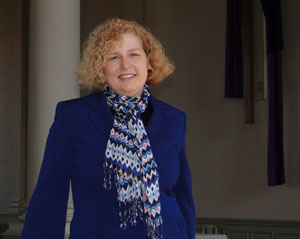 What does a theologian say to young preachers in the early 1930s, at the dawn of the Third Reich?
What does a theologian say to young preachers in the early 1930s, at the dawn of the Third Reich?
The Rev. Dr. Angela Hancock, assistant professor of homiletics and worship, answers that question in her new book Karl Barth's Emergency Homiletic, 1932-1933: A Summons to Prophetic Witness at the Dawn of the Third Reich.
This is the story of how a preaching classroom became a place of resistance in Germany in 1932-1933—a story that has not been told in its fullness. In that emergency situation, Barth took his students back to the fundamental questions about what preaching is and what it is for, returning again and again to the affirmation of the Godness of God, the only ground of resistance to ideological captivity.
No other text has so interpreted Barth's “Exercises in Sermon Preparation” in relation to their theological, political, ecclesiastical, academic, and rhetorical context.
Read Professor Hancock’s recent blog post on her new book.
